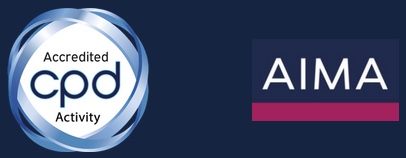
Written by Matthew Raver
Managing Director
10 key components of IFPR
The Investment Firms Prudential Regime (‘IFPR’) takes effect on 1 January 2022. It is a major overhaul of the prudential framework for investment firms and certain asset managers. In this article, our Managing Director, Matt Raver, sets out the 10 key components of IFPR, and a list of things to consider in the coming weeks for each of them, but please click here if you require advice or assistance with your IFPR implementation.
1. Firms in scope
Broadly speaking, IFPR applies to a firm that is classified as a MiFID investment firm i.e. a firm that performs MiFID activities and one or more of the exemptions from this classification do not apply.
IFPR also applies to certain firms that are not classified as a MiFID investment firm but they perform activities that are equivalent to MiFID activities. This includes a ‘Collective Portfolio Management Investment’ (‘CPMI’) firm that falls under the Alternative Investment Fund Managers Directive (‘AIFMD’) and as well as managing an AIF can also conduct certain ‘top-up’ activities.
Action Items
- Determine whether IFPR applies to the firm.
- Determine whether the firm should apply to the FCA to vary its permission, for example where IFPR is deemed to be too onerous, and an alternative prudential regime is available.
2. Prudential category
Under IFPR, broadly speaking, most investment firms are divided into ‘small and non-interconnected’ firms (‘SNI firm’) and firms that cannot be classified as such (‘Non-SNI firm’). The firm is classified as an SNI firm if all of the following criteria are fulfilled:
a) Assets under management (AUM) (which may include advisory mandates) is under £1.2 billion
b) Client orders handled (COH) (including reception and transmission of orders) is under £100 million per day (cash trades) and is under £1 billion per day (derivatives)
c) The activity of safeguarding and administering assets is not conducted
d) The activity of holding client money is not conducted
e) The firm does not have permission to deal on own account
f) On- and off-balance sheet total is under £100 million.
g) Total annual gross revenue from investment services and/or activities is under £30 million.
h) The firm’s ‘daily trading flow’ is zero (this relates to dealing on own account or executing orders on behalf of clients in the firm’s own name).
Non-SNI firms are subject to additional requirements, compared to SNI firms.
Some of the criteria are applied on a ‘group’ basis. The purpose of this is to ensure that groups do not split their activities among firms in order to avoid the ‘Non-SNI’ categorisation.
Action Items
- Determine the firm’s prudential status as at 1 January 2022.
- Put in place a process to re-appraise the firm’s ongoing prudential status. This is particularly relevant where a firm is close to one or more of the stated thresholds, meaning that a change in prudential status might be required after 1 January 2022.
3. Group considerations
There are additional requirements for IFPR where an ‘investment firm group’ has been established.
The definition of an ‘investment firm group’ covers a parent undertaking that is incorporated in the UK or has its principal business in the UK, and its subsidiaries, at least one of which must be a MIFIDPRU investment firm. Broadly speaking, a subsidiary is an undertaking where the parent undertaking exercises (or can exercise) dominant influence or control over it.
It also covers connected undertakings, which are relevant financial undertakings that are not subsidiaries, but which form part the investment firm group.
Where an ‘investment firm group’ is identified, the Firm should determine whether it is likely to be subject to the prudential consolidation regime or, where the structure is sufficiently simple, whether an application to the FCA to apply the ‘group capital test’ should be made.
• Prudential consolidation regime
The consolidated framework under IFPR places obligations on a parent undertaking even where it is not FCA regulated.
A ‘consolidated situation’ is established where certain requirements under IFPR apply to a UK parent entity, as if it and the relevant financial undertakings in its investment firm group, form a single MIFIDPRU investment firm.
Specifically, the UK parent entity must comply with the following on the basis of its consolidated situation:
• Own funds;
• Own funds requirements;
• Concentration risk;
• Liquidity, unless the FCA has granted an exemption;
• Disclosure; and
• Reporting
• Group capital test
The purpose of the group capital test is to ensure that a parent entity holds sufficient regulatory capital to support its capital investment in its subsidiaries, and therefore to create a stable group capital structure.
The requirements are more straightforward compared to the prudential consolidation regime. FCA pre-approval to apply the group capital test is required. However, firms transitioning into IFPR that seek permission to apply the group capital test by 1 February 2022, can automatically apply the group capital test pending the FCA’s decision.
Action Items
- Determine whether an investment firm group has been established.
- If so, either:
- Ensure that the group complies with the prudential consolidation regime; or
- Seek FCA permission to apply the simpler group capital test and ensure compliance with this framework. Seek FCA approval to apply this framework by 1 February 2022 in order to be able to automatically apply the framework pending the FCA’s decision.
4. Own funds requirement
‘Own funds’ refers to an investment firm’s eligible regulatory capital. The own funds requirement is a quantitative calculation that established the ‘base’ or ‘minimum’ amount of regulatory capital that must be held at all times.
The own funds requirement for a SNI firm is the higher of:
• The permanent minimum capital requirement (‘PMR’); or
• The fixed overheads requirement (‘FOR’).
The own funds requirement for a non-SNI firm is the higher of:
• The permanent minimum capital requirement (‘PMR’);
• The fixed overheads requirement (‘FOR’); or
• The K-factor requirement (‘KFR’).
• PMR
The PMR is either £75,000, £150,000 or £750,000 dependent upon activities conducted. Many agency asset managers and investment advisers will have a PMR of £75,000.
• FOR
The fixed overheads requirement is one-quarter of the firm’s annual expenses, subject to certain deductions.
• KFR
The purpose of the K-factors is to cover ‘potential harms’ arising from conducting various activities. There are 9 separate K-factors, and some or all may apply to a Non-SNI firm. Many firms that historically have been classified as a ‘BIPRU’ firm or an ‘Exempt CAD’ firm are likely to be subject to one of more of the following K-factors:
• K-AUM requirement (assets under management) – 0.02% of the firm’s average AUM; and
• K-COH requirement (client orders handled) – 0.1% of average COH attributable to cash trades and 0.01% of average COH attributable to derivatives trades.
There are various transitional provisions in place to enable firms to ease into the new regime. For example, the PMR will be introduced gradually. For example, firms subject to a PMR of £75,000 will initially have a PMR of £50,000, with this amount rising by £5,000 per year until 2027.
For exempt CAD firms, there are also transitional provisions that phase in the FOR and (as applicable) the KFR. This recognises that historically such firms have been subject to a ‘fixed’ regulatory capital requirement only.
For CPMI firms, the aforementioned shall apply in tandem with the existing prudential requirements as set out in AIFMD. Among other things this means that, effectively, the minimum requirement shall remain €125,000.
Various sources of capital can be treated as own funds, including share/members’ capital, audited reserves and subordinated loans. The categorisations of eligible capital might not be the same as per a firm’s legacy regime.
Action Items
- Determine the firm’s permanent minimum requirement (£75k, £150k or £750k).
- Determine the firm’s fixed overheads requirement.
- As applicable, determine the firm’s K-factor requirement.
- Determine which sources of capital are eligible to be treated as ‘own funds’, and whether these differ from the legacy prudential framework.
- Based upon the foregoing, determine whether the firm is required to alter its capital structure, for example, increase its ‘own funds’, as a consequence of the implementation of IFPR.
- Establish ongoing processes (or amend existing processes) to monitor own funds and the own funds requirement.
5. Liquid assets requirement
Many investment firms have historically been subject to a qualitative liquidity requirement, for instance a requirement to be able to meet liabilities as they fall due. For these firms, IFPR introduces a quantitative liquid assets requirement.
A firm must hold an amount of core liquid assets equal to the sum of:
• One third of the amount of its fixed overheads requirement (i.e. 1 month of fixed expenses); and
• 1.6% of the total amount of any guarantees provided to clients.
Core liquid assets include cash at bank, and trade receivables subject to certain conditions.
Note that for CPMIs, this liquid assets requirement shall operate alongside the equivalent requirement that forms part of the AIFMD prudential regime.
Action Items
- Determine the firm’s liquid assets and liquid assets requirement.
- Establish ongoing processes to monitor liquid assets and the liquid assets requirement.
6. The ICARA
The Internal Capital Adequacy and Risk Assessment (‘ICARA’) is a process that considers whether the systems and controls in place to identify, monitor and, where appropriate, reduce potential material harms, are appropriate. This is with respect to both the ongoing operation of the business and the winding down of its business.
Furthermore, the ICARA seeks to ensure that the financial resources (own funds and liquid assets) held by a firm are adequate for the business it undertakes. This is with respect to the firm’s financial viability as it conducts its business activities, and to enable it to conduct an orderly wind down.
The ICARA process is multi-faceted and includes both qualitative and quantitative aspects. It has some similar characteristics to the ICAAP which has historically been a key facet of the prudential regime for certain investment firms. However, for such firms it is not necessarily the case that there will be a ‘smooth transition’ from the ICAAP regime to the ICARA regime.
Among other things, the ICARA:
• Reviews the effectiveness of a firm’s risk management processes
• Identified material harms as applicable to the firms and steps taken to mitigate them
• Sets out the firm’s business model assessment and capital and liquidity planning
• Summarises stress testing conducted by the firm
• Sets out the potential recovery actions that the firm has identified, for example in times of financial stress
• Provides an overview of a firm’s wind-down planning
• Explains how the firm is complying with the overall financial adequacy rule (‘OFAR’). This is an obligation to hold adequate own funds and liquid assets, with reference to the firm’s ongoing business activities and wind-down arrangements. This analysis includes determining whether the base own funds requirement (calculated above) is sufficient or whether this needs to be increased to cover the identified material harms (taking into account the steps taken to mitigate these). The analysis also considers liquid assets required in times of stress or to wind down the firm. These liquid assets can be core liquid assets (as described above) or non-core liquid assets including certain investments that can be converted into cash.
The FCA has stated that a firm should have completed an initial ICARA assessment by 1 January 2022. The reason for this is so that a firm can make the adjustments to its own funds and liquid assets, as per the OFAR analysis, in advance of this requirement taking effect.
Firms should therefore commence this process sooner rather than later, if they have not already done so.
Action Items
- Consider what is required in order to complete the initial ICARA assessment by 1 January 2022.
- Where it is concluded that the firm should increase its own funds or liquid assets as a result of the ICARA analysis, ensure that this is enacted by 1 January 2022.
- Put in place ongoing processes to review the ICARA at least annually (and more frequently as applicable).
7. Remuneration
IFPR introduces remuneration requirements that standardises the remuneration framework for investment firms.
It replaces existing remuneration frameworks that apply to certain firm types, including the IFPRU remuneration code and the BIPRU remuneration code.
Other firm types, such as Exempt CAD firms, will become subject to a prudential remuneration framework for the first time.
The new framework features a ‘tiered’ approach. SNI firms will be subject to ‘basic’ requirements only. Most non-SNI firms will be subject to ‘basic’ and ‘standard’ requirements. The largest non-SNI firms will in addition be subject to ‘extended’ requirements which include the so-called ‘pay-out process rules’ (for example deferral of variable remuneration and part-payment of variable remuneration in shares).
The new requirements apply with respect to the first remuneration period that commences after 1 January 2022.
Action Items
- Determine which elements of the new remuneration framework apply to the firm.
- Where the firm is not currently subject to a prudential remuneration framework (e.g. an Exempt CAD firm) analyse the requirements and determine the measures that should be put in place.
- Where the firm is subject to a prudential remuneration framework (e.g. the IFPRU or BIPRU remuneration code) conduct a gap analysis between the existing and new requirements to determine the changes that should be made to the firm’s internal remuneration arrangements.
- Where the firm is subject to both the new prudential framework and also an existing remuneration framework (e.g. CPMI firms) determine how the respective frameworks align.
8. Concentration risk
IFPR introduces a requirement to monitor and control concentration risk, which includes the risk arising from trading and non-trading book exposures, cash deposits and earnings.
Non-SNI firms are required to submit ‘concentration’ returns to the FCA. The first of these is for the period Q1, 2022, to be submitted at the end of April 2022.
Action Items
- Ensure the firm has in place processes to monitor and control concentration risk.
- Non-SNI firms should ensure that they are able to collate the data required for the FCA returns on concentration risk.
9. Disclosure
For certain firms, the public disclosure requirements replace the ‘Pillar 3’ disclosure which is a feature of the IFPRU and BIPRU frameworks. For other firms, for example Exempt CAD firms, public disclosure is a new concept.
The FCA has not yet finalised the rules regarding disclosure. However, it is envisaged that there will be a tiered approach, with a greater scope of topics applying to non-SNI firms compared to most SNI firms.
Non-SNI firms are – as a minimum – required to disclose on the following topics:
• Risk management objectives
• Governance arrangements
• Own funds
• Own funds requirement
• Remuneration
Conversely, SNI firms (unless they issue capital instruments that are classified as ‘additional tier 1 capital’) will be required to make a remuneration-based disclosure only.
The disclosures must be made available in an easily found and accessible section of the firm’s website.
Action Items
- Review the content requirement and ensure the firm has processes in place to capture the information required to publish the disclosure.
- Determine when the initial disclosure must be published.
10. FCA engagement
Investment firms have historically been required to submit prudential returns to the FCA via the RegData (formerly, GABRIEL) portal.
This requirement shall continue to apply, albeit the form and content of the returns shall change.
Certain returns, for instance those related to capital, liquidity and (for non-SNI firms) concentration risk, are required on a quarterly basis. There is also a dedicated return with respect to entities subject to the group capital test.
In addition to the regular returns, there are a number of ‘event driven’ returns that include, for example:
• A change of prudential category i.e. from SNI to Non-SNI or vice versa
• An issuance or redemption of regulatory capital
• An application to reduce the fixed overheads requirement
In addition, IFPR introduces mandatory notification requirements where own funds or liquid assets fall to certain levels. This includes where own funds falls to within 110% of the own funds requirement, or when own funds or liquid assets breach the own funds/liquid assets (as applicable) requirement, or reach the ‘wind-down trigger’ i.e. a level where it is presumed that the firm will instigate its wind-down provisions.
Action Items
- Review the updated schedule of RegData returns and put in place a process to complete and file these on a timely basis.
- Ensure the firm is aware of the various ‘event driven’ FCA pre-approval and notification events of relevance to the firm.
Conclusion
For many firms, IFPR implementation is a complex project, both in terms of scope and complexity. There are new ways of determining regulatory capital and liquidity requirements, from a quantitative and a qualitative perspective, a revised framework for measuring and tackling harms, business disruption and wind-down planning, and new requirements regarding remuneration, concentration risk, disclosure and FCA reporting.
With 25 days to go until the IFPR go-live date, firms should ensure that they have a plan in place to be in compliance with the new regime from the outset. Click here to contact us for advice or assistance with your IFPR implementation.
Click for more on our FCA Compliance services.












